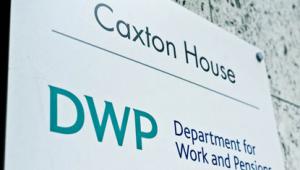In a review nearly three years on from a National Audit Office report that concluded weak management had undermined the project, senior IfG fellow Nicholas Timmins said the subsequent reset of the scheme had put the programme in a much better state.
Timmins said the changes now meant that “something that is recognisable as universal credit may well emerge at the other end”.
According to his From disaster to recovery? review, the single biggest cause of the initial failure was a wholly unrealistic timetable for implementation. This led the Department for Work & Pensions to seek to build universal credit before it had been properly defined.
Replacing six in-work and out-of-work benefits, including tax credits, with a single, simpler system intended to ensure being work pays more than unemployment benefits remains a hugely ambitious project, Timmins highlighted. Once it is completed, it will affect some 8 million households and around a third of the working-age population.
Today, around 300,000 people actually receive universal credit, and these are mostly simpler single person claims, against the many millions who would have been covered under the original timetable. Completion is not due until 2022, five years later than originally planned.
It is still far too soon to tell whether universal credit will finally succeed in its aims, Timmins concluded.
“Huge challenges remain – not just taking on new claims but transferring the many millions on existing benefits and tax credits, including some of the most vulnerable on employment and support allowance. Its generosity has repeatedly been cut,” he stated.
“But the lessons from how it has been turned around from the brink of disaster to something that may eventually work could prove valuable for other government projects. And crucially, it now has a timetable that may finally prove realistic.”
Today’s report outlines lessons from the turnaround, including DWP acquiring the ability to build a new version of the universal credit IT infrastructure in-house following the reset. This corrected mistakes made in the 1990s and 2000s when not just the ability to build IT but to manage the contracts was outsourced across government.
In addition, policy, IT build and operational staff have been brought together in a “test and learn” approach that is allowing the programme to adapt to how staff and claimants cope with it.
However, Timmins also concluded the scheme remains very much a work in progress. “Recovery is not the same as recovered,” he stated.
In particular, current funding and taper levels for benefit payments within the system may not achieve the ‘dynamic’ effects originally intended.
“But universal credit is a framework. If the incentives to take work are now too small, this or a future government could make them more generous, altering the taper or increasing the work allowances…Admirably and unusually, the legislation allows for much experimentation within that framework,” he added.
“Would a more generous taper significantly affect behaviour or not? Would bigger work allowances help? Would significantly changing the child care element make a big difference? Would doing more to incentivise second earners have a bigger overall impact than simply getting inactive people to do at least a few hours’ work a week? All these and more, if and when universal credit is up and running at scale, can be tried locally against a set of controls elsewhere.”




















